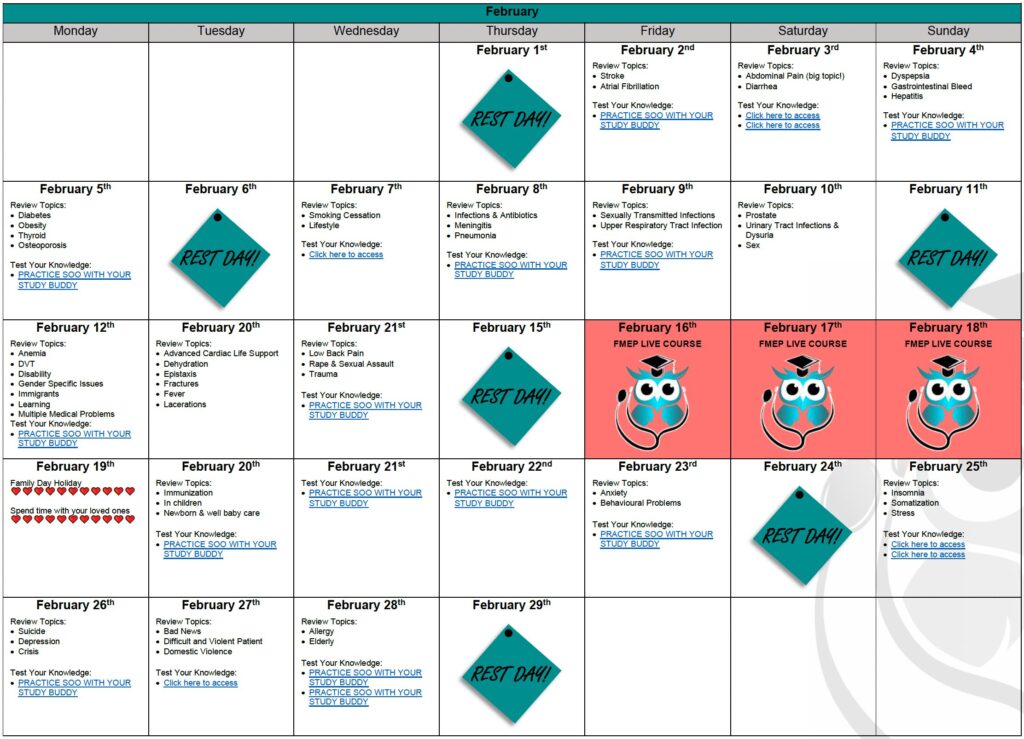You are about to meet Sara, a 25-year-old patient with a 20-pack-year smoking history. She would like to quit. You walk into the room.
Do you know how to counsel your patient? Is it Champix or nicotine… both… or neither? What’s the latest advice? To help prepare you, we’ve written a summary of an excellent CFP article – find the full article with all the statistics here!
First of all… some important points to remember:
- Most smokers who try to quit without cessation aids will be unsuccessful
- Suggest a combination of pharmacologic and non-pharmacologic treatments for all smokers trying to quit – this results in the highest cessation rate!
- Varenicline is currently the most effective pharmacologic cessation option
- Ensure that you know where your patient is with respect to quitting: precontemplation, contemplation, preparation, action, or maintenance
- Consider following this format on your SOO: ask, advise, assess, assist, arrange for follow-up
Get to the FMEP Superior Certificant level by asking these questions:
- How important is it for you to quit?
- Have you thought about how you would you like to quit?
- Do you want to quit abruptly or gradually?
- What type of assistance do you need (pharmacotherapy, counseling, etc.)?
- Have you ever tried to cut back on or quit smoking?
- I would like to help you quit. Can we discuss how to increase your odds of success?
- Are you worried about anything in particular when it comes to quitting?
- I would like to see you in the office (or talk to you by phone) on your quit date.
- What problems have you had? Are there situations you worry about confronting without cigarettes?
“Doc, should I try the nicotine patch?â€
Facts about NRTs (nicotine replacement therapies):
- NRTs include nicotine gum, patches, and inhalers
- NRT = 2x greater likelihood of success
- Patch + any other NRT = MORE effective
- Nicotine gum: 2 or 4 mg piece/dose
- Nicotine inhaler: 6 to 16 cartridges per day (each cartridge = 4 mg of nicotine, 80 inhalations)
- Nicotine lozenge:Â max 20 lozenges/day
- Nicotine patch:Â 10-21 mg/day
- Nasal spray:Â 1 dose = 2 x 0.5-mg sprays (one in each nostril)
- SE: upset stomach, headaches, dizziness, and nasal congestion
“Doc, I’ve heard bupropion can help. What is that, exactly?â€
- Bupropion works by blocking the reuptake of dopamine and norepinephrine
- Bupropion = 2x greater likelihood of success
- 150 mg in the morning for three days, then increased to 150 mg twice per day
- Start 1-2 weeks before quit date
- Continue for 7-12 weeks
- Can be taken while using the patch to increase cessation likelihood
- SE: dry mouth, insomnia, and increased likelihood of seizures (1 in 1000)
“Doc, what about the newer pill for smoking cessation?â€
Facts about varenicline:
- Compared to bupropion, the OR of varenicline is 1.66… but $$$$
- Days 1 to 3: 0.5 mg once per day
- Days 4 to 7: 0.5 mg twice per day
- Day 8 to end of treatment: 1 mg twice per day for 11 weeks
- Start 1 week before your quit date
- SE: nausea, insomnia, and abnormal dreaming
“Doc, is there any other medication out there?â€
- There are two second-line options for patients who can’t use first-line therapy:
 “What else can I do to increase my chances of quitting?â€
- Nonpharmacologic treatment
- Brief interventions (patient education/advice)
- CBT
- Self-help resources (less effective)
- Telephone quit lines or internet-based therapy
- Acupuncture
- Exercise
- Hypnotherapy
Written by Maria Veinberg. Reviewed by Dr. Prokubovskaya & Dr. Premji.

